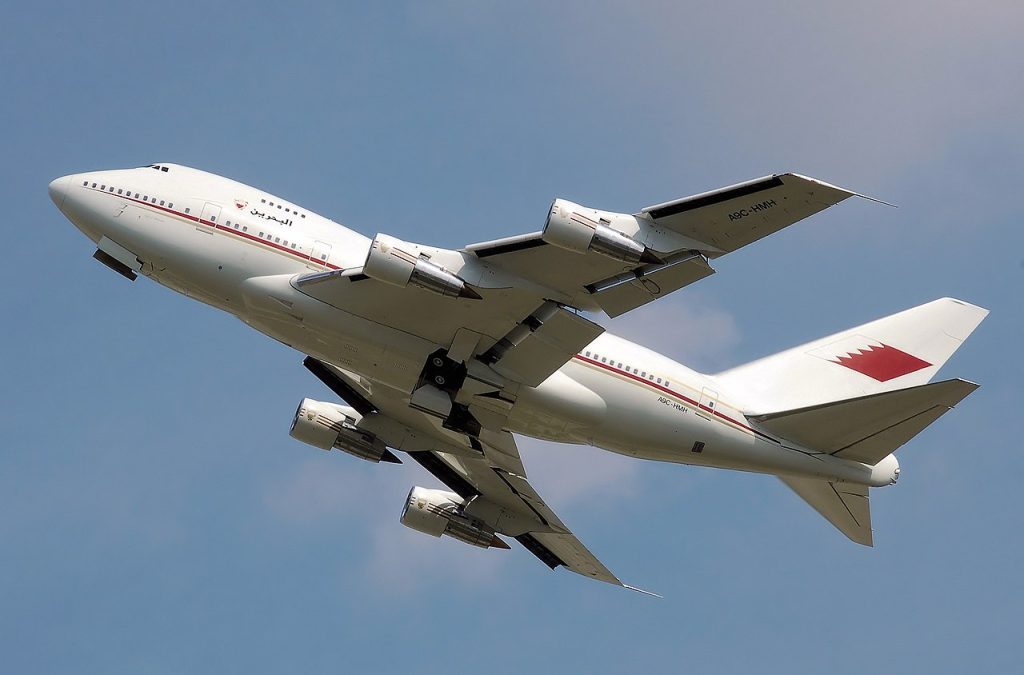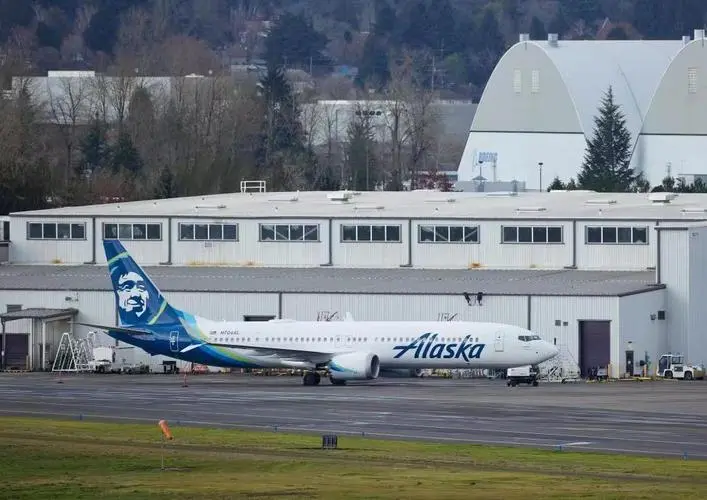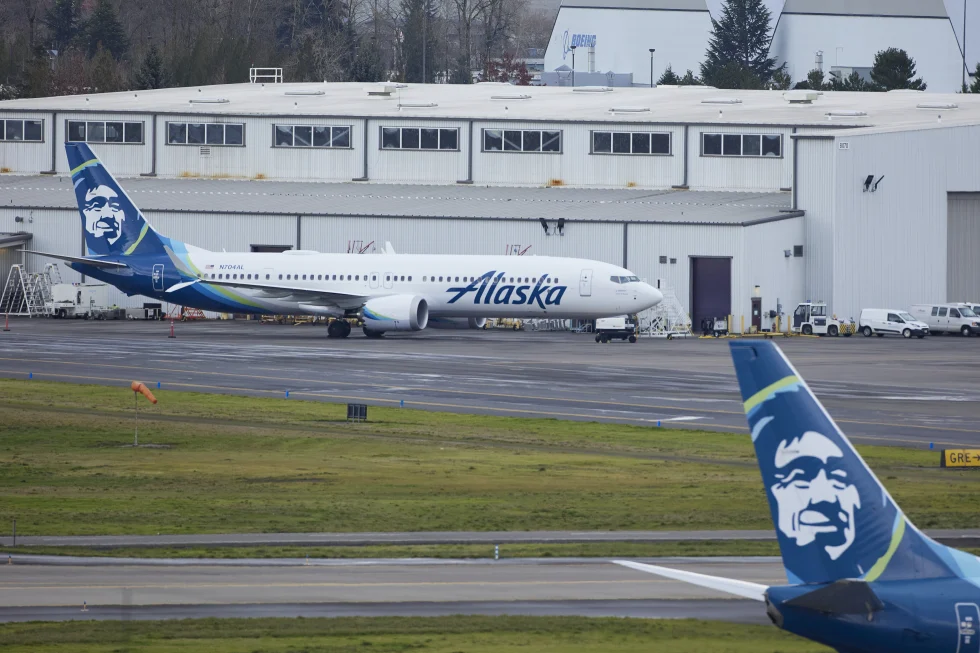Alaska Airlines’ recent decision to cancel all flights on Boeing 737 Max 9 planes until Saturday following an in-flight blowout of a fuselage panel has raised concerns among travelers and industry stakeholders.
This move comes as the airline awaits new instructions from Boeing and federal officials on how to inspect and address the issues affecting the fleet.
The impact of this decision is significant, as it has led to the cancellation of approximately 110 to 150 flights per day, disrupting travel plans for numerous passengers.
By midday on Wednesday, Alaska Airlines had already canceled about 120 flights, which accounts for one-fifth of its daily schedule.
In response to these developments, the airline has assured its customers that it is working diligently to reaccommodate affected passengers on alternative flights.
The repercussions of Alaska Airlines’ actions extend beyond its own operations, as United Airlines, the only other U.S. carrier operating the Max 9, has also been forced to cancel approximately 200 flights.
The full extent of these cancellations and their relation to the Boeing plane remains unclear, highlighting the broader impact on the aviation industry.
The Federal Aviation Administration’s decision to ground all Max 9s in the United States following the incident underscores the severity of the situation.
This move was prompted by the blowout of a door plug on an Alaska Airlines jet over Oregon, which resulted in a hole in the side of the aircraft.
While the pilots of flight 1282 managed to safely return to Portland, Oregon, and execute an emergency landing, the incident has raised serious safety concerns.
In response to these events, the FAA approved inspection and repair guidelines developed by Boeing on Monday.
However, the agency’s subsequent directive for Boeing to revise the instructions based on “feedback received in response” indicates ongoing uncertainties and complexities in addressing the issues affecting the Max 9 fleet.
The implications of these developments are multifaceted. Firstly, the safety and confidence of passengers in air travel, particularly on Max 9 jetliners, have been called into question.
The potential reluctance of some travelers to fly on these aircraft, even temporarily, poses a significant challenge for airlines that operate the Max 9.
Moreover, the financial and operational impacts on Alaska Airlines and United Airlines, as well as their efforts to mitigate disruptions for affected passengers, underscore the broader ramifications of this situation.
In conclusion, Alaska Airlines’ decision to cancel all flights on Boeing 737 Max 9 planes until Saturday reflects the airline’s commitment to prioritizing safety and addressing the concerns surrounding the fleet.
However, the broader implications of this decision, including its impact on travelers and the aviation industry as a whole, underscore the need for comprehensive and timely resolutions to ensure the safety and confidence of passengers.
As the situation continues to unfold, it is imperative for all stakeholders, including airlines, manufacturers, and regulatory authorities, to collaborate effectively in addressing these challenges and restoring trust in air travel.
In recent times, the aviation industry has been at the forefront of public attention due to safety concerns surrounding the Boeing 737 Max 9 aircraft.
Both Alaska and United Airlines have reported issues with loose bolts and panel door problems, prompting a thorough inspection of the affected planes.
These developments have raised significant questions about the safety protocols and accountability within the aviation manufacturing and maintenance processes.
A Boeing spokesman’s announcement on the company’s commitment to updating inspection procedures based on feedback from the Federal Aviation Administration (FAA) and the airlines reflects a step in the right direction.
The emphasis on safety as the primary determinant for the return of the planes to service is a crucial reassurance for passengers and industry stakeholders.
However, the underlying issues that led to these safety concerns must be thoroughly addressed to prevent reoccurrence and restore public trust in the Boeing 737 Max 9 aircraft.
The installation of door plugs, carried out by Boeing supplier Spirit AeroSystems, has come under scrutiny in the wake of these incidents.
While investigations are ongoing, the lack of clarity regarding the last company to work on the plug of the ill-fated Alaska plane raises further questions about the oversight and accountability in the supply chain and maintenance processes.

It is imperative for all stakeholders involved in the production and maintenance of aircraft to uphold the highest standards of quality and safety to ensure the well-being of passengers and crew.
Boeing’s CEO, David Calhoun, addressing the employees at the 737 factory in Renton, Washington, acknowledged the gravity of the situation and emphasized the need to learn from the mistakes made.
The company’s commitment to preventing similar incidents in the future is commendable, but it must be followed by concrete actions to reinforce safety measures and restore confidence in the Boeing brand.
Transparency and accountability are paramount in such instances, and it is essential for Boeing to maintain open communication with the public and its airline customers to address concerns and provide reassurance.
The significance of this situation extends beyond the immediate safety concerns. It underscores the critical need for robust oversight, stringent quality control measures, and a culture of accountability within the aviation industry.
The repercussions of safety lapses in aircraft manufacturing and maintenance processes can have far-reaching implications, impacting not only the reputation of the companies involved but also the safety and trust of passengers and the broader aviation ecosystem.
As the FAA and other regulatory bodies continue to oversee the investigation and subsequent actions, it is imperative for all parties involved to prioritize transparency, thoroughness, and accountability.
The aviation industry must collectively work towards fostering a culture of safety, continuous improvement, and unwavering commitment to the well-being of passengers and crew members.
In conclusion, the recent safety concerns surrounding the Boeing 737 Max 9 aircraft have brought to light the critical importance of stringent safety protocols, accountability, and transparency within the aviation industry.
While the commitment to updating inspection procedures and acknowledging mistakes is a step in the right direction, it is essential for Boeing, its suppliers, and regulatory authorities to work collaboratively to address the root causes of these incidents and implement measures that prevent their recurrence.
The well-being and trust of passengers and the integrity of the aviation industry depend on the swift and comprehensive resolution of these issues.
In the wake of recent aviation incidents involving Boeing’s 737 Max aircraft, the aviation industry finds itself at a critical juncture.
The words of a concerned industry insider echo the sentiments of many: “Moments like this shake them to the bone, just like it shook me to the bone.”
The gravity of the situation is palpable, and the imperative to restore confidence in the safety of air travel is undeniable.
The call for reassurance is not confined to the boardrooms of aviation giants but reverberates among the traveling public as well.
The recent blowout on an Alaska flight has prompted a surge in travelers filtering their searches to ascertain the type of aircraft they will be flying on.
The fact that an aircraft model has become a household name due to safety concerns is an unequivocal indication that something has indeed gone awry.
The response from industry leaders and travel organizations has been telling. Boeing’s commitment to addressing the anxiety of its customers is apparent, with an acknowledgment of the need to navigate through this tumultuous period.
The travel-search site Kayak, recognizing the heightened scrutiny of aircraft types, has swiftly adapted its platform to facilitate easier access to airplane-type filters.
This proactive response underscores the collective recognition of the need to address and allay the concerns of the traveling public.
Scott Keyes, founder of the travel site Going, aptly captures the transient nature of public memory in the face of aviation incidents.
He predicts that, once regulatory bodies clear the 737 Max for flight and in the absence of further incidents, the public’s attention will wane, and the aircraft type will cease to be a primary consideration for travelers.
This forecast, while likely, underscores the cyclical nature of public perception and the ephemeral nature of attention in the modern age.
The Boeing 737 Max, the latest iteration of a venerable aircraft lineage, has been marred by tragic crashes and manufacturing quality issues.
The specter of these incidents looms large, casting a shadow over the aircraft’s reputation and the broader aviation industry.
The imperative for comprehensive and sustained measures to rectify these issues and rebuild trust is paramount.
The path forward demands a multi-faceted approach. Firstly, stringent regulatory oversight and meticulous safety protocols must be upheld to ensure the airworthiness of the 737 Max and all aircraft.
Transparency, accountability, and a commitment to rectifying manufacturing quality issues are imperative to restore faith in Boeing’s flagship aircraft.
Secondly, effective communication and engagement with the traveling public are essential. Airlines and travel organizations must prioritize transparency and provide comprehensive information regarding aircraft types, safety measures, and ongoing improvements.
Empowering travelers with knowledge and reassurance is pivotal in rebuilding trust and dispelling apprehensions.
Furthermore, the aviation industry must embrace a culture of continuous improvement, innovation, and safety.
Robust training programs, technological advancements, and a commitment to best practices are indispensable in fostering a culture of safety and excellence.
The road ahead may be fraught with challenges, but it also presents an opportunity for the aviation industry to reaffirm its commitment to safety, resilience, and progress.
The collective efforts of industry stakeholders, regulatory bodies, and the traveling public are pivotal in charting a course toward a future where air travel is synonymous with safety, reliability, and peace of mind.

In conclusion, moments of turbulence such as those experienced by the aviation industry demand unwavering resolve and concerted action.
The imperative to reassure and rebuild trust is paramount, and it necessitates a comprehensive and sustained approach.
By upholding the highest standards of safety, transparency, and innovation, the industry can navigate through these challenging times and emerge stronger, ensuring that air travel remains a symbol of safety and assurance for generations to come.
